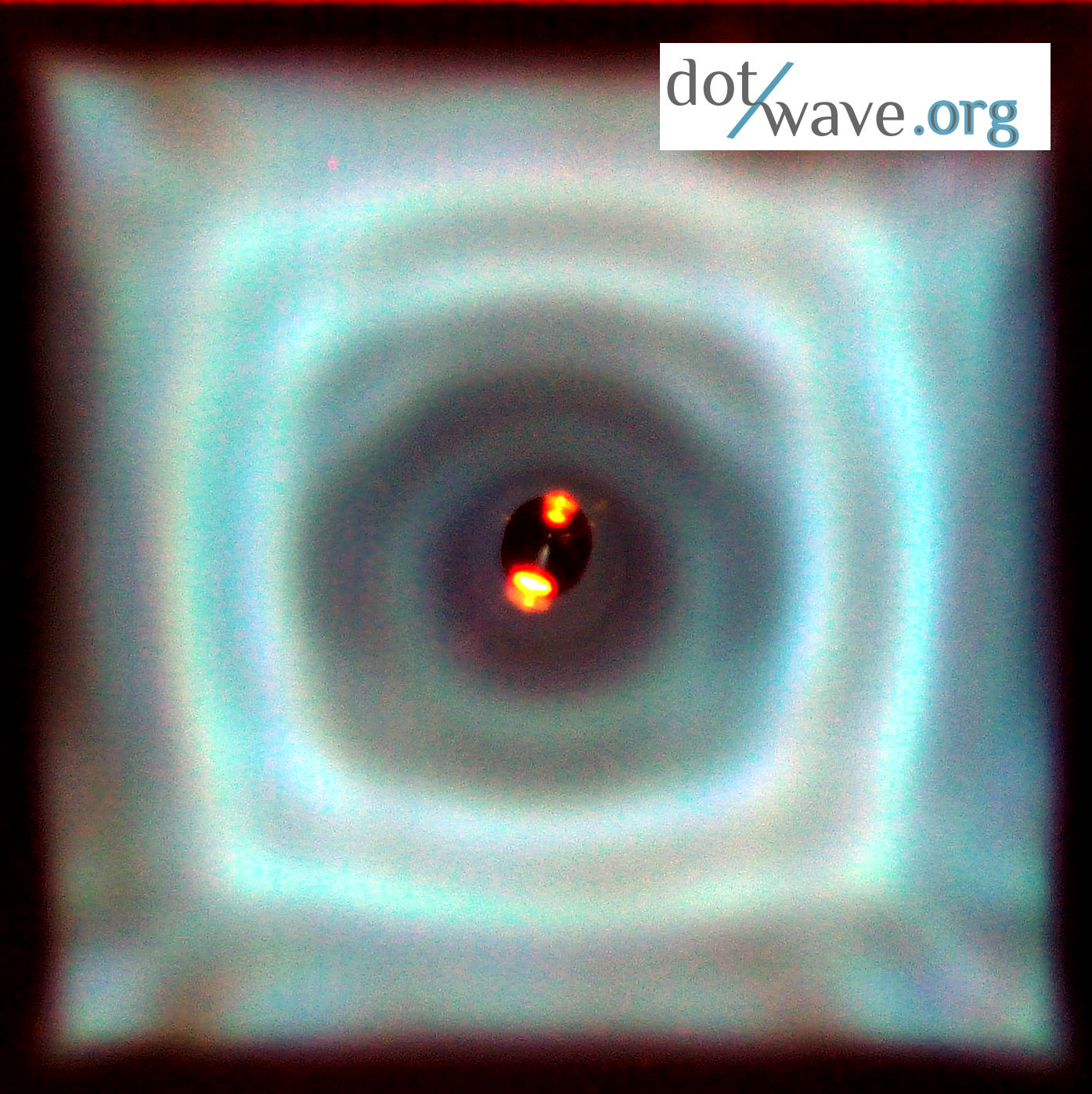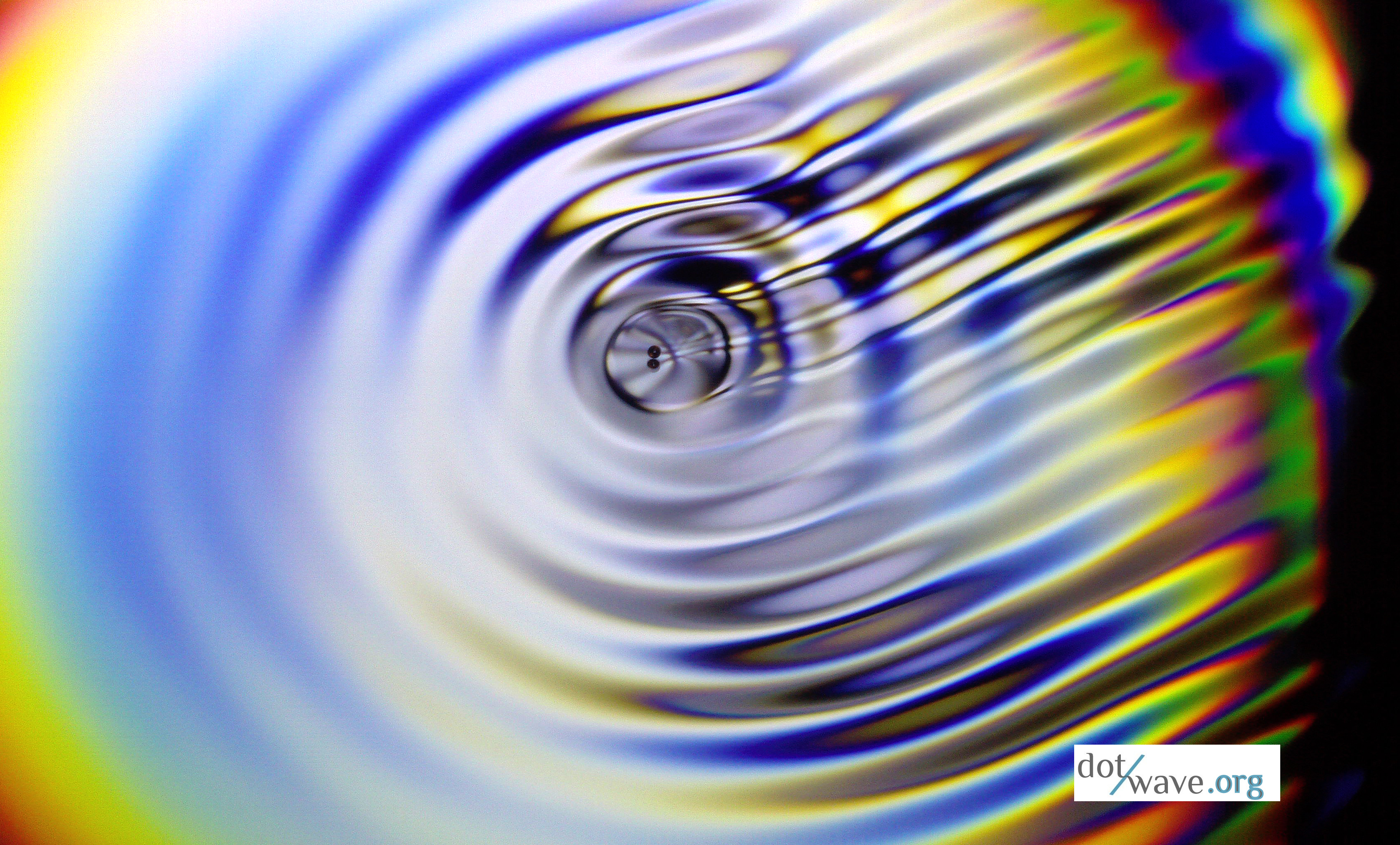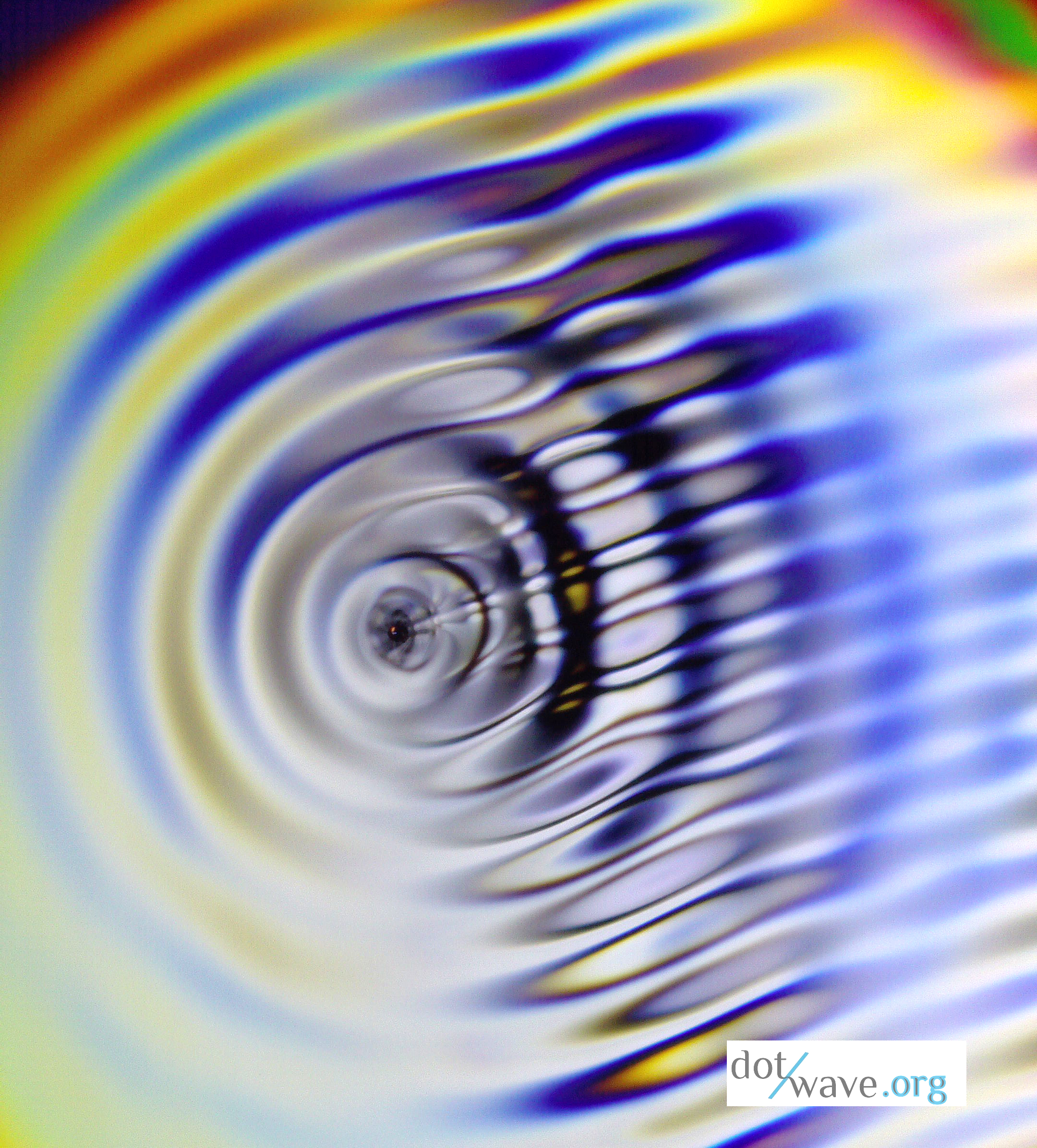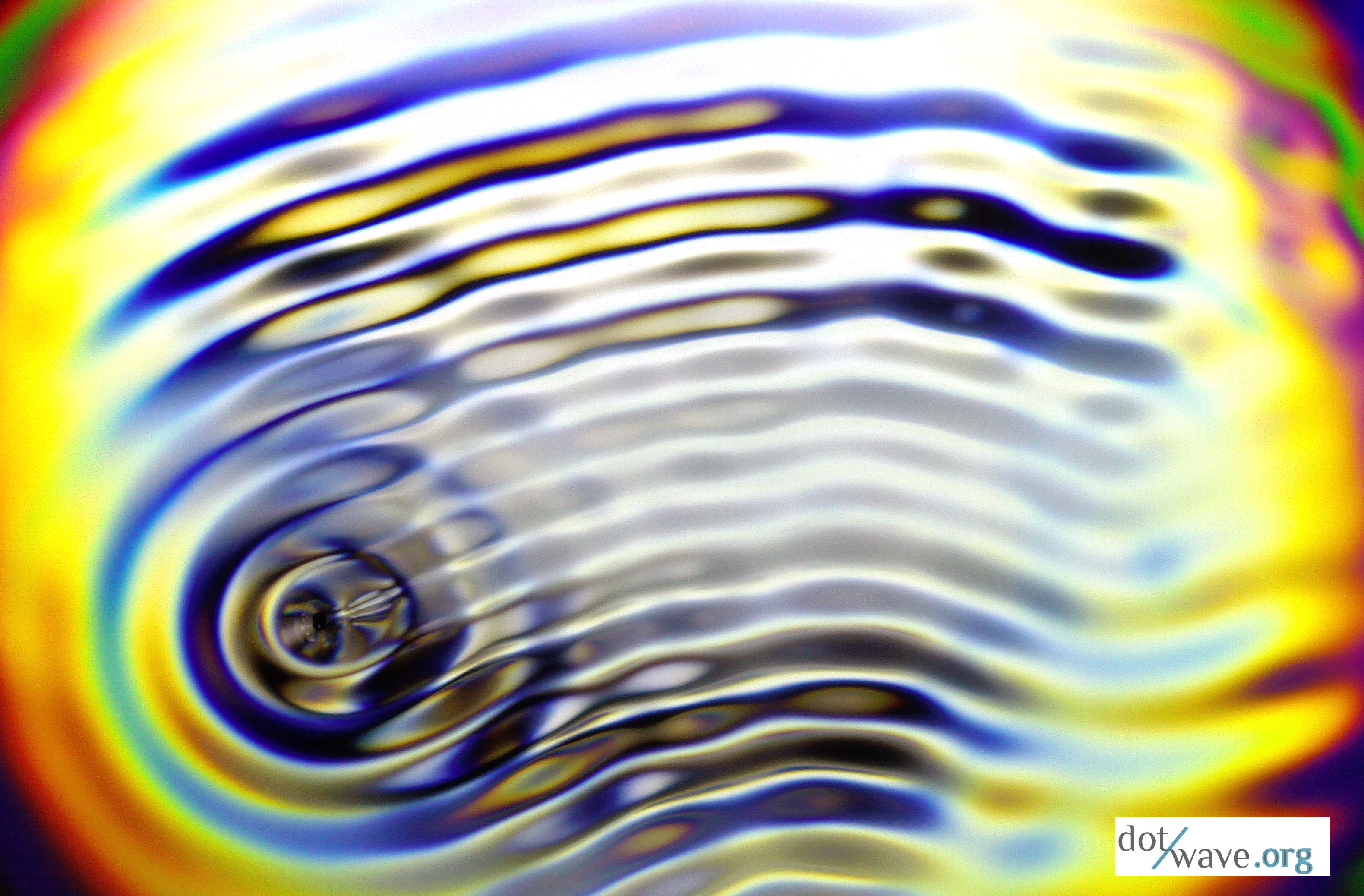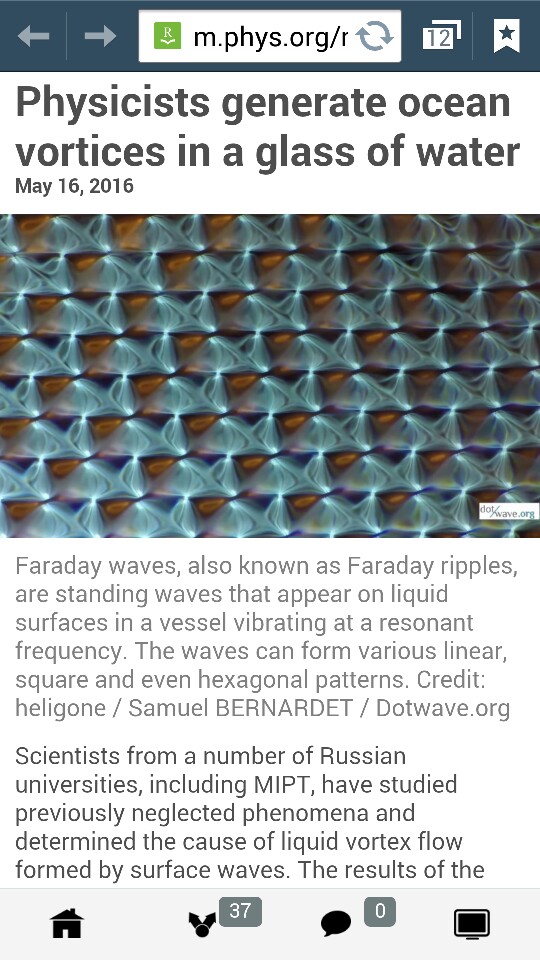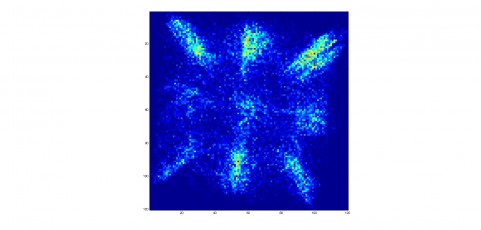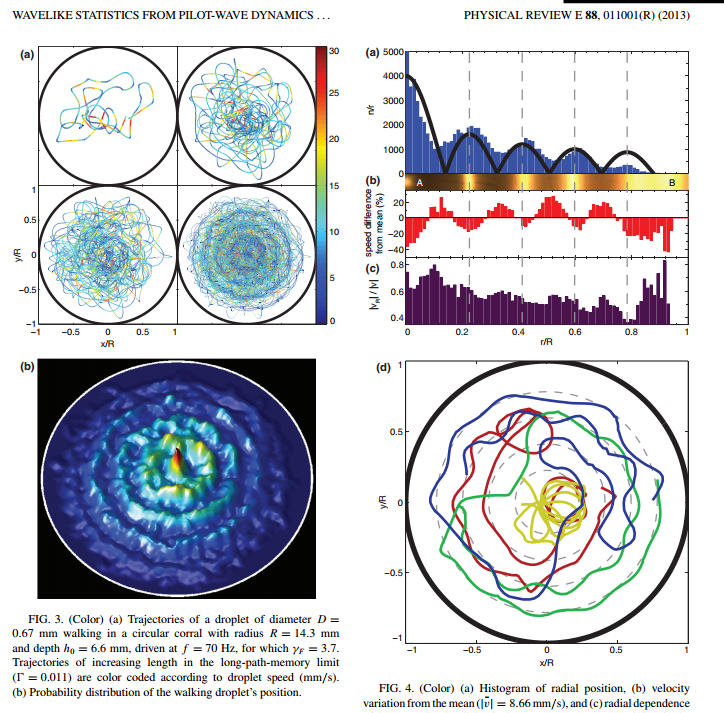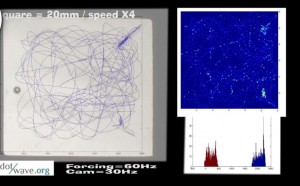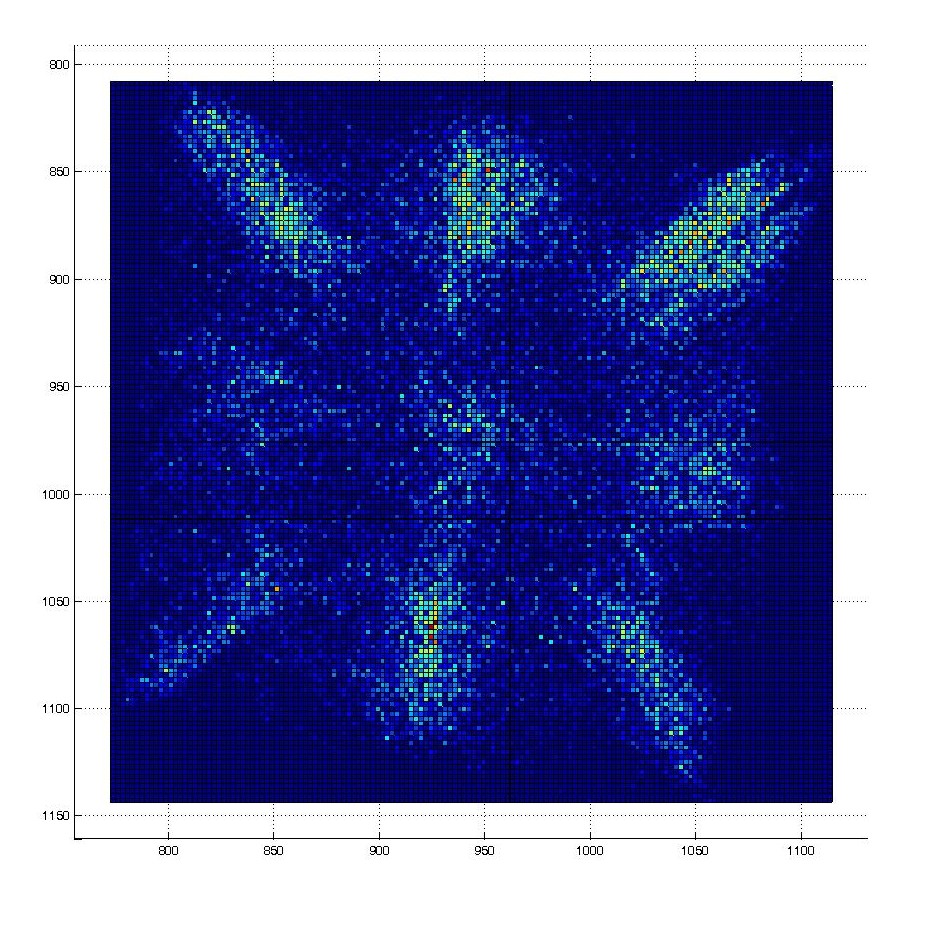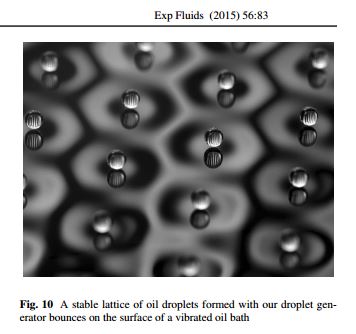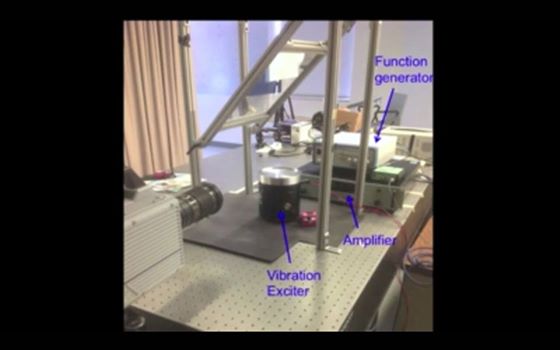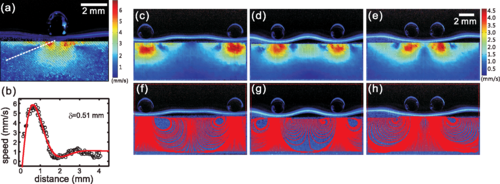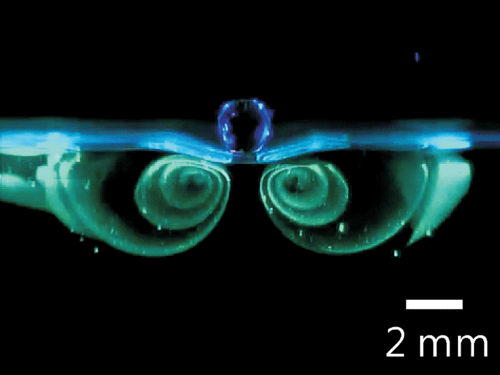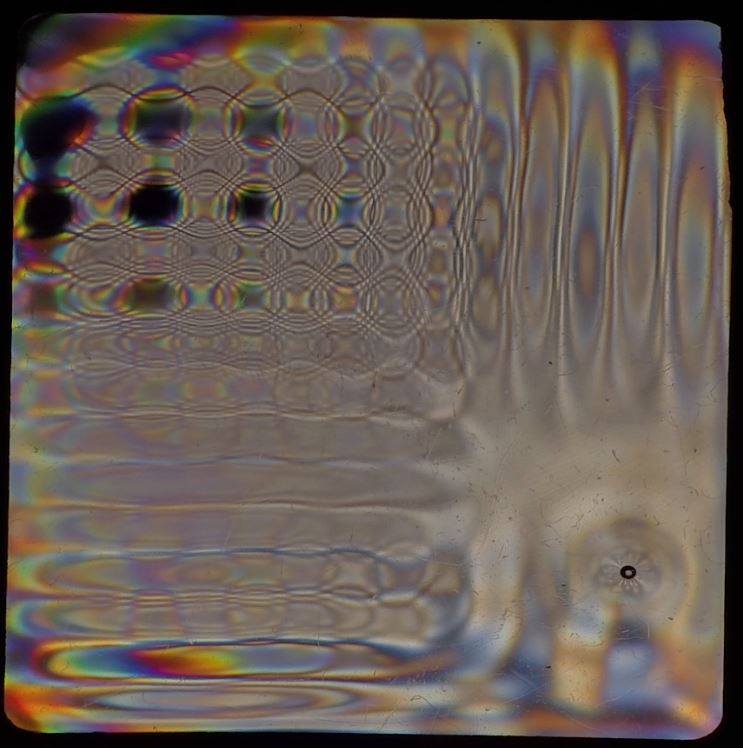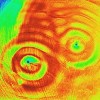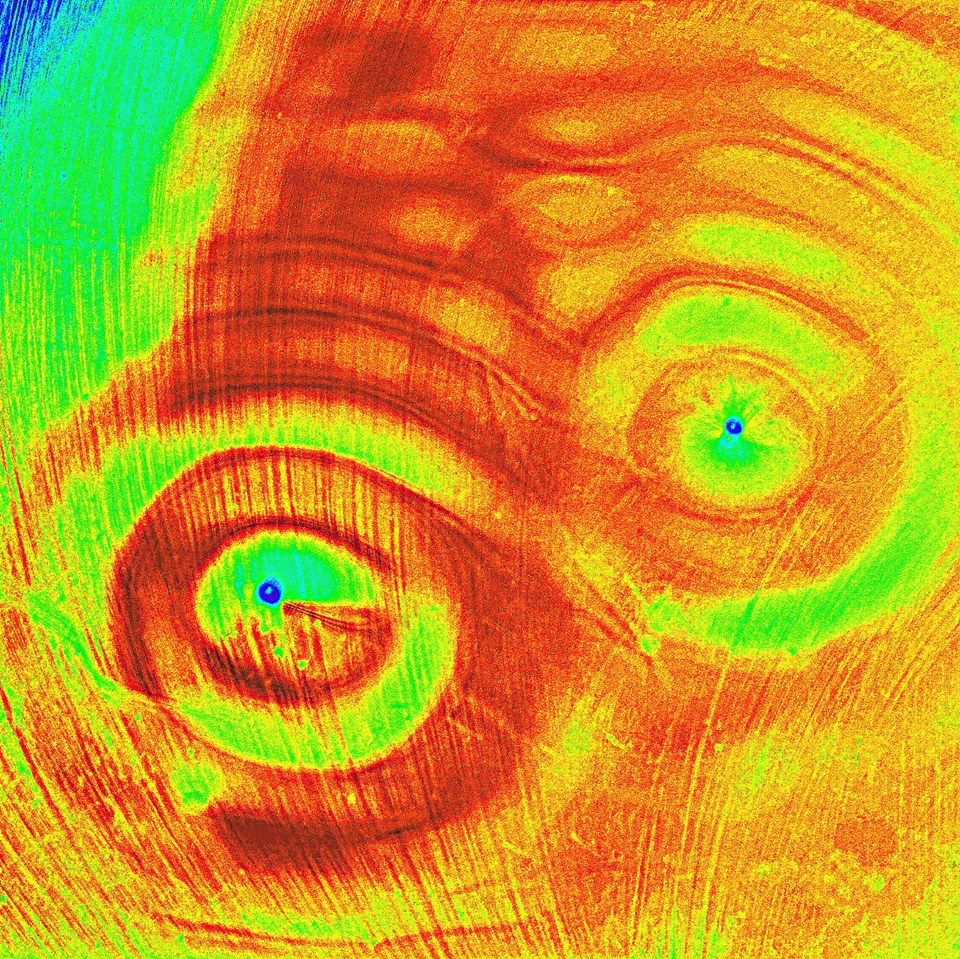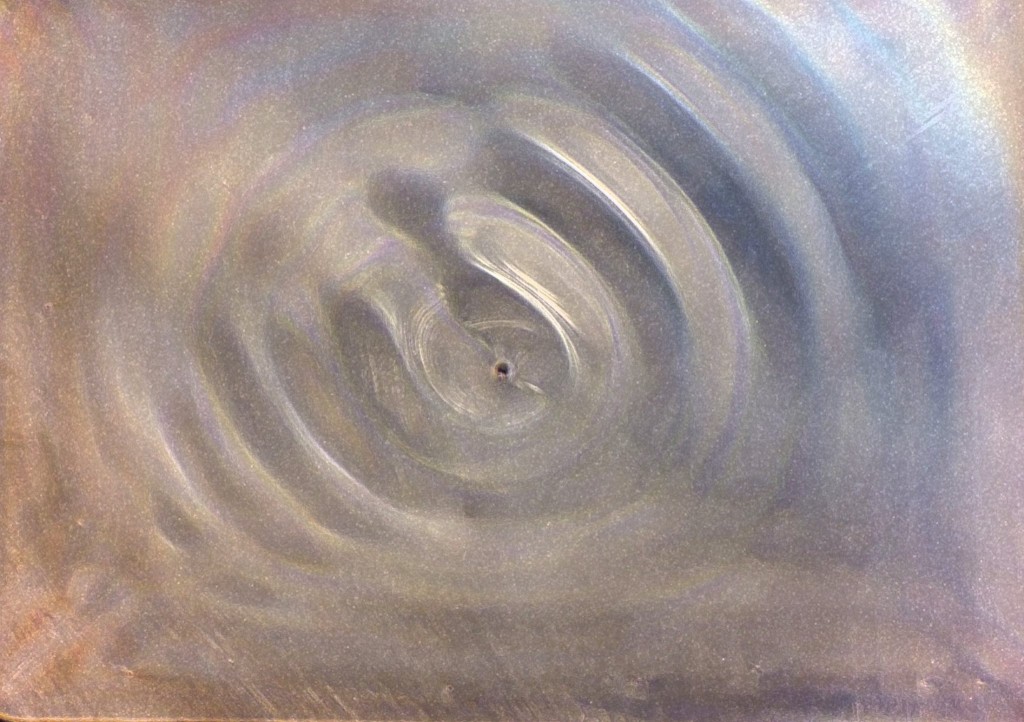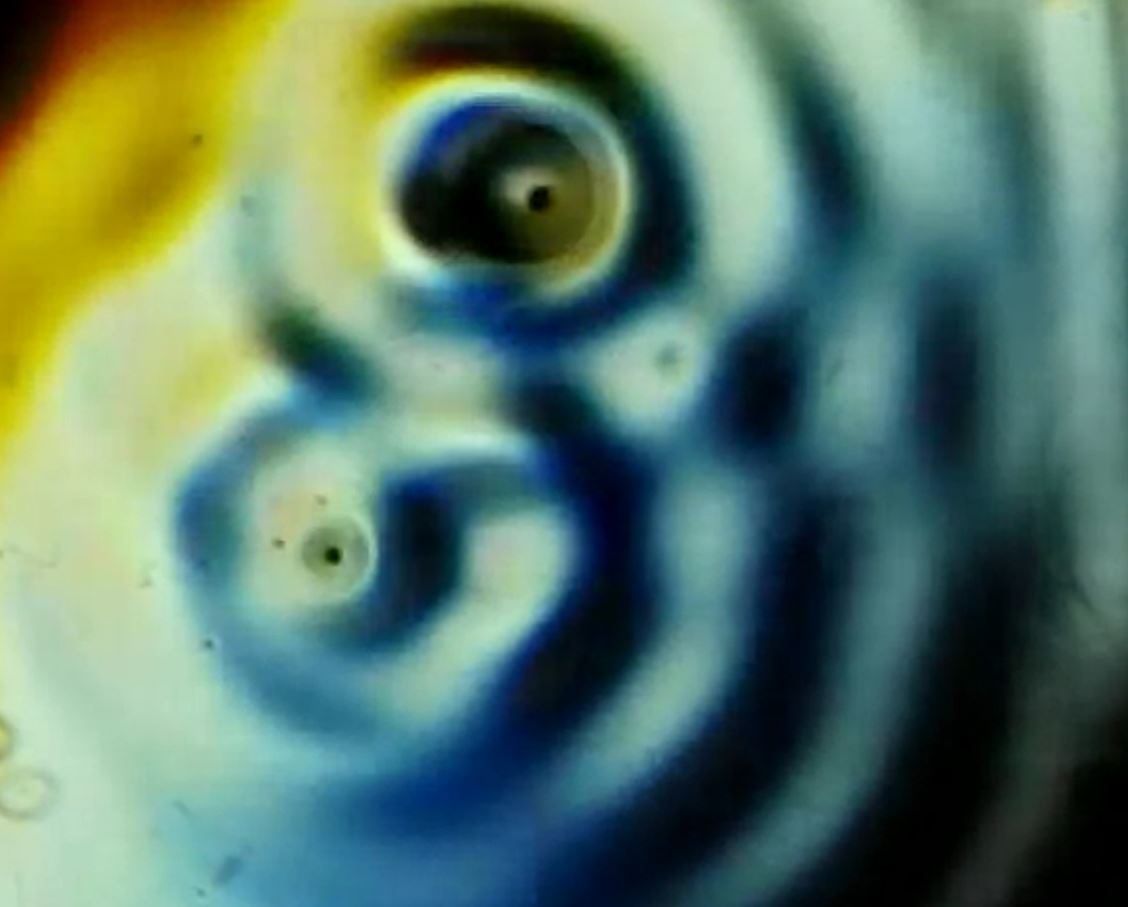Rainbow colored dotwave
Dotwave picture on Phys.org
Russian Physicians from Moscow Institute of Physics and Technology have chosen a dotwave.org picture to illustrate an article published on phys.org concerning their latest paper,
Des physiciens russes de l’institut de physique et de technologie de Moscou ont choisi une de mes photos pour illustrer un résumé d’un de leur papier sur les ondes de Faraday publié sur phys.org
Emergent quantization in a square box
Goal of the experiment :
A walking droplet is placed in a square box, at the onset of Faraday thresold.
The trajectory of the droplet is mapped.
In the long time limit, does a self-interference pattern appear ? what’s its shape ? How does it relate to the square cavity surface wave eigen-modes ?
cf. experiment by Bush et al. : in a circular corral
http://dotwave.org/wavelike-statistics-from-pilot-wave-dynamics-in-a-circular-corral/
In short, we try to reproduce the experiment of Bush et al, but in a square box.
First result :
A walking droplet in a square cavity shows random motion, but with time, its trajectory is building a statistic reminiscent of the resonant mode of the cavity.
This can be seen by the naked eye in this movie excerpt :
This is then confirmed with optical tracking measurment of the trajectory :
The position distribution (~probability density) is then computed :
PDF Version of this résumé :
Emergent quantization of trajectories in a square box
A low‑cost, precise piezoelectric droplet‑on‑demand generator
Harris, D. M., Liu, T., & Bush, J. W. (2015). A low-cost, precise piezoelectric droplet-on-demand generator. Experiments in Fluids, 56(4), 1-7.
We present the design of a piezoelectric droplet-on-demand generator capable of producing droplets of highly repeatable size ranging from 0.5 to 1.4 mm in diameter. The generator is low cost and simple to fabricate. We demonstrate the manner in which droplet diameter can be controlled through variation of the piezoelectric driving waveform parameters, outlet pressure, and nozzle diameter.
http://math.mit.edu/~bush/wordpress/wp-content/uploads/2015/04/Harris-DropGenerator.pdf
Influence of a local change of depth on the behavior of bouncing oil drops
Carmigniani, R., Lapointe, S., Symon, S., & McKeon, B. J. (2013). Influence of a local change of depth on the behavior of bouncing oil drops. arXiv preprint arXiv:1310.2662.
http://arxiv.org/pdf/1310.2662.pdf
Full (Subscription required) : http://www.sciencedirect.com/science/article/pii/S0894177713003038
From caltech Mc Keon Research Group : http://www.mckeon.caltech.edu/publications/journal.html
Abstract :
The work of Couder et al [1] (see also Bush et al [3, 4]) inspired consideration of the impact of a submerged obstacle, providing a local change of depth, on the behavior of oil drops in the bouncing regime. In the linked videos, we recreate some of their results for a drop bouncing on a uniform depth bath of the same liquid undergoing vertical oscillations just below the conditions for Faraday instability, and show a range of new behaviors associated with change of depth.
This article accompanies a uid dynamics video entered into the Gallery of Fluid Motion of the 66th Annual Meeting of the APS Division of Fluid Dynamics.
And a very interesting video showing the influence of depth on the trajectory :
Source : http://arxiv.org/src/1310.2662v1/anc/V102356_InfluenceLocalChangeDepth_BouncingDrop.mp4
Vortex-mediated bouncing drops on an oscillating liquid
Chu, H. Y., & Fei, H. T. (2014). Vortex-mediated bouncing drops on an oscillating liquid. Physical Review E, 89(6), 063011
http://journals.aps.org/pre/abstract/10.1103/PhysRevE.89.063011 (Subsrciption required)
Stunning Vizualisization of undersurface flows
Abstract :
We have investigated the behavior of bouncing drops on a liquid surface by using particle image velocimetry analysis. A drop on an oscillating liquid surface is observed to not coalesce with the liquid and to travel along the surface if the oscillation is strong enough. A streaming vortex pair, induced by the alternatively distorted liquid surface, shows up below a bouncing drop. The time-averaged flow fields of the vortices are measured. In our quasi-one-dimensional setup, there are three stable distances for the drops, which can be characterized by the Faraday wavelength. The interactions of the vortex-mediated bouncing drops are deduced from the streamlines in the liquid bulk. We further show that a three-dimensional vortex ring is induced by a bouncing drop in a square cell.
Uneven Faraday Instability
Dotwave “art”
Read MoreConfinement of electrons to quantum corrals on a metal surface
Crommie, M. F., Lutz, C. P., & Eigler, D. M. (1993). Confinement of electrons to quantum corrals on a metal surface. Science, 262(5131), 218-220.
http://users.phys.psu.edu/~rick/MATH/LECTURES/LECT13/PDF/eigler_circular_corral.pdf
How it is done : DIY Cymatronics
A Transparent plate is mounted (via magnets) to three loud peakers serial-connected to an amplifier delivering a sinus signal.
Silicon oil ( with viscosuity 20 Cst) is put on the transparent plate.
A point source light is collimated, goes through the oil
A mirror placed below redirects the light beam to tha camera.
NB : it is not easy to set up this light system : the light source muste precisely tuned at the focal point of the lens.


